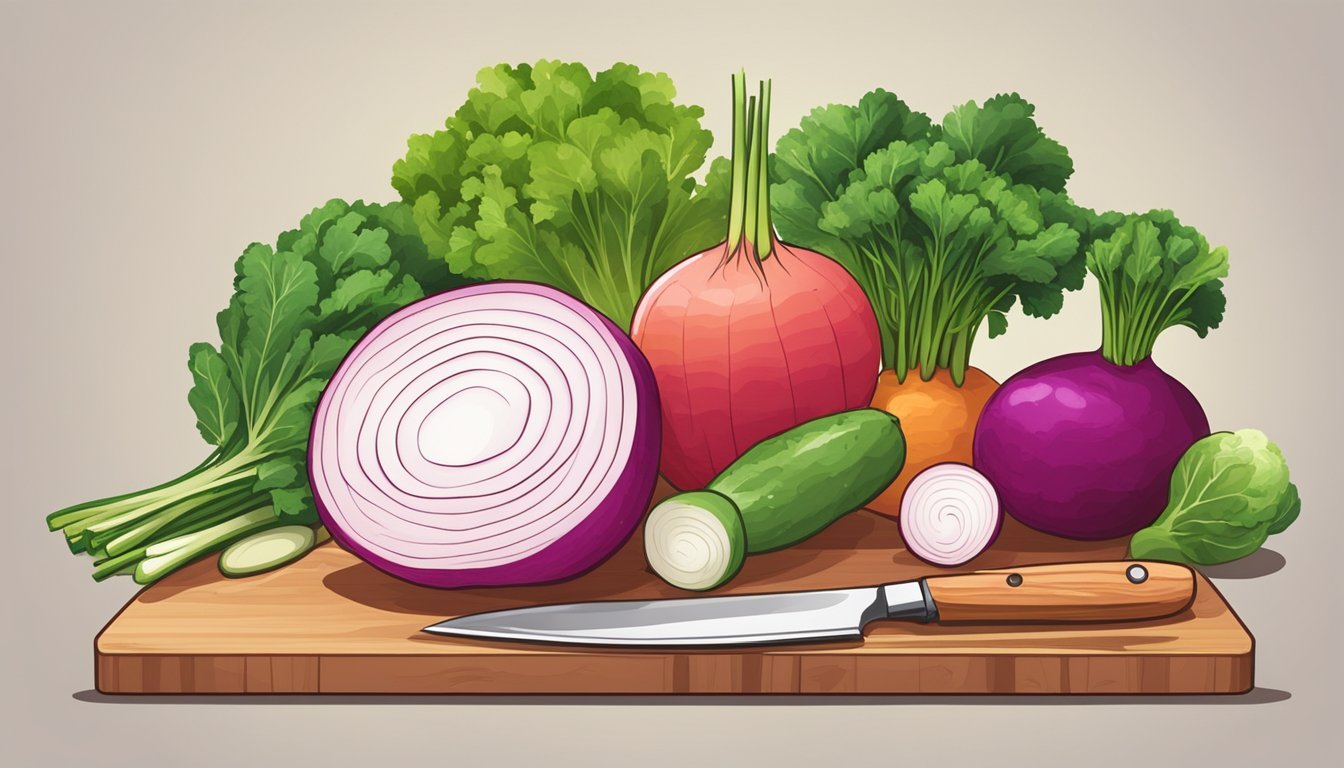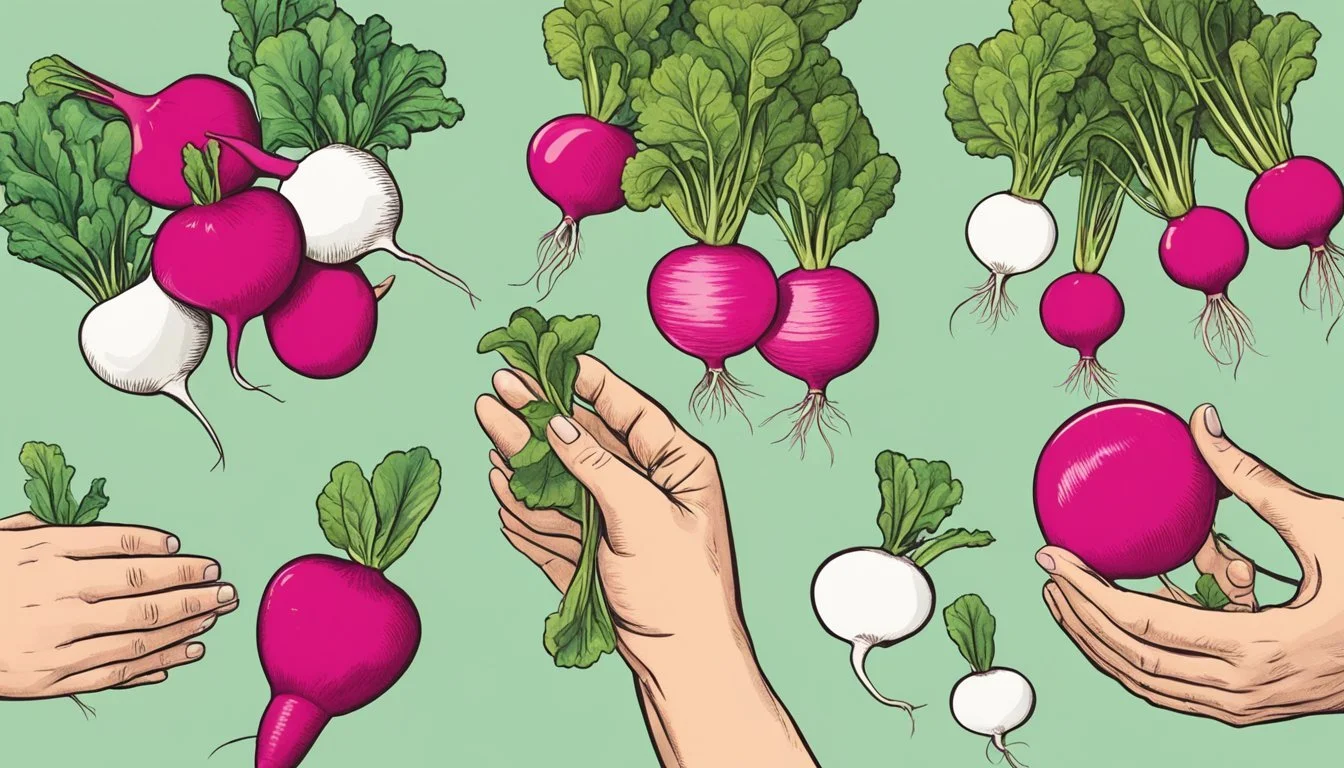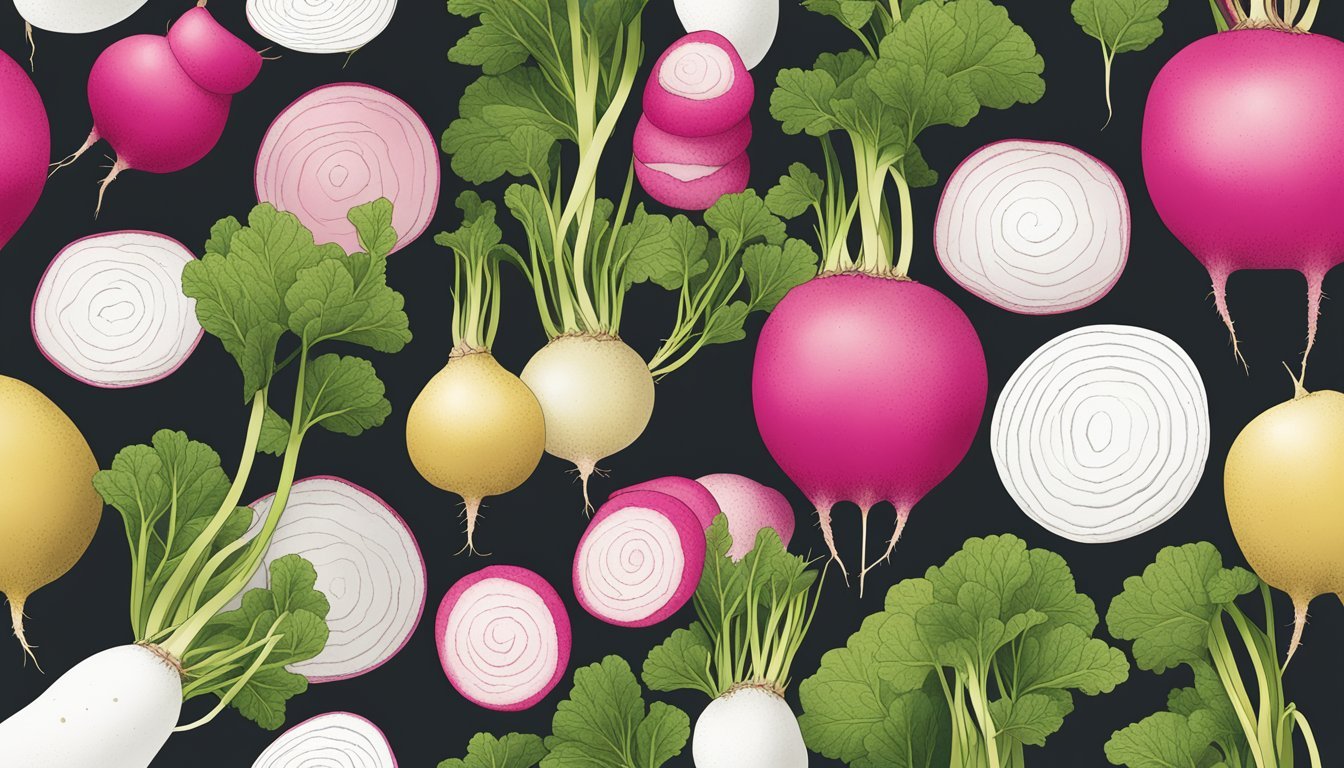Sakurajima Radish Substitutes
Best Alternatives for Your Recipes
The Sakurajima radish, renowned for its mammoth size and sweet, crisp texture, stands as one of the most unique vegetables in the world. Originally cultivated in Japan, this giant radish can grow up to 100 pounds, making it a standout in any dish or garden. While it might not always be available, there are several viable substitutes that can mimic its distinctive flavor and texture.
When looking for substitutes, horseradish root emerges as a strong contender. It's widely used as a spice and can replicate the Sakurajima radish's flavor profile when mixed with salt and vinegar. Another excellent alternative is the parsnip, which shares a similar appearance to pale carrots and offers a comparable texture.
For those seeking to replace the Sakurajima radish, these substitutes offer both flavor and versatility, making it easier to adapt recipes without compromising on taste. By exploring these alternatives, you can enjoy the unique taste and texture of radishes year-round, regardless of availability.
Understanding Sakurajima Radish
The Sakurajima radish, originating from Japan, is renowned for its enormous size and unique flavor, making it distinct among other daikon radish varieties. It offers significant nutritional benefits and diverse culinary applications.
History and Origin
Sakurajima radish, also known as Sakurajima daikon, hails from Sakurajima, a former island in Japan's Kagoshima Prefecture. This variant of the Japanese radish was developed in the early 1800s. Its cultivation began as a way to utilize the volcanic soil of Sakurajima, which contributed to its remarkable size and quality. Over the centuries, it has become a staple in Japanese agriculture, prized for its size and versatility.
Culinary Uses
In the kitchen, the Sakurajima radish is valued for its sweet and mildly spicy flavor. It can be used in a variety of dishes, including pickles, salads, and stews. Due to its large size, it is often sliced thinly or cut into smaller pieces. The radish retains its texture well when cooked, making it ideal for long simmering dishes. Its mild flavor also makes it a good substitute for other radishes in recipes.
Nutritional Value
The Sakurajima radish is not just notable for its size but also for its nutritional content. It is rich in Vitamin C and Folate, which are essential for immune function and cell growth. Additionally, it contains antioxidant properties that help protect against free radicals. Including this radish in one’s diet can contribute to general health and well-being.
Physical Characteristics
The Sakurajima radish stands out for its massive size. Typically, it weighs around 13 pounds but can reach up to 100 pounds. Its shape is more rounded and resembles a basketball compared to the elongated form of other daikon radishes. The skin is smooth, and the flesh is crisp and juicy, making it visually and texturally distinct.
Common Sakurajima Radish Substitutes
Several suitable alternatives can replace Sakurajima radish in various dishes. Each substitute offers unique flavors and textures that can closely mimic what Sakurajima radish provides.
Daikon
Daikon radish is a popular substitute due to its similar crunchy texture and mild, sweet flavor. Originating from East Asia, Daikon is a versatile root vegetable. It can be used both raw and cooked, fitting well in salads, pickles, and soups. Daikon is slightly less spicy than Sakurajima, but its large size and firm flesh make it an excellent alternative.
Uses:
Salads and coleslaw
Pickled dishes
Stews and soups
Korean Radish
Korean radish, also known as "mu," is another great substitute. It has a slightly firmer texture and a mild peppery taste. This root vegetable is commonly used in Korean cuisine for making kimchi and soups. It maintains a good crunch when cooked, making it a reliable substitute for Sakurajima radish.
Uses:
Kimchi and other fermented dishes
Soups and stews
Stir-fries
Other Substitutes
Other substitutes include Jicama, Watermelon Radish, and Kohlrabi. Jicama offers a sweet and crunchy texture, making it perfect for raw applications, similar to Sakurajima. Watermelon radish, with its vibrant pink interior and mild flavor, can add visual and taste appeal to salads. Kohlrabi, known for its crisp and slightly sweet taste, can replace Sakurajima in cooked dishes.
Uses:
Jicama: Salads, slaws, and raw vegetable platters
Watermelon Radish: Salads and garnish
Kohlrabi: Soups, stir-fries, and roasted dishes
Selecting the Right Substitute
Choosing a suitable substitute for Sakurajima radish involves considering key factors such as flavor, texture, and the specific requirements of the recipe you are preparing. Each aspect plays a crucial role in determining how well the substitute will match the original ingredient.
Based on Flavor
Flavor is essential when selecting a substitute. Sakurajima radish has a mild, sweet taste with a hint of spiciness. For a similar flavor profile, daikon is an excellent choice. It shares the subtle sweetness and mild spice found in Sakurajima radish.
White turnips can also serve as a substitute. They bring a slightly sweet taste and can mimic the flavor characteristics needed in dishes like soups and stir-fries.
If a peppery bite is desired, red radishes provide a sharper taste but may overpower some dishes. They are best used in salads and pickled preparations.
Based on Texture
Texture is another critical factor. Sakurajima radish is known for its crisp, firm texture. To replicate this, jicama stands out for its comparable crunch and firmness, making it suitable for salads and raw dishes.
Daikon also offers a similar texture. It is versatile and can be used in a variety of cooking methods such as roasting and stir-frying.
Water chestnuts provide a crunchy texture but lack the slight spiciness of Sakurajima radish. They are best used in stir-fries and salads where their crispness can shine.
Based on Usage in Recipes
Different recipes have specific requirements, and choosing the right substitute depends on the cooking method. For soups, daikon’s mild flavor and softening texture when cooked make it an ideal replacement.
For salads and raw preparations, both jicama and white turnips work well due to their crispness and refreshing taste. They maintain their texture and add a subtle sweetness to the dish.
In stir-fry dishes, water chestnuts and daikon's versatile textures hold up well under high heat. They absorb flavors while maintaining a pleasant crunch. For roasting, daikon can serve as an effective substitute because of its ability to soften and caramelize slightly, similar to Sakurajima radish.
How to Substitute in Recipes
When substituting Sakurajima radishes in recipes, consider the preparation method and desired flavor profile for the best results. Here are detailed recommendations for salads, cooking, and pickling.
For Salads
Sakurajima radishes are known for their mild, sweet flavor and crisp texture, making them ideal for salads. Jicama and Kohlrabi are excellent substitutes. Both offer a similar crunch and sweetness.
Jicama: Provides a sweet, nutty taste. Use in a 1:1 ratio.
Kohlrabi: Slightly sweeter, retains crunch without overpowering.
For a more peppery flavor, Red Radishes are a good option. They add a spicy kick and vibrant color, enhancing both taste and presentation. Cabbage hearts, particularly Napa cabbage hearts, are also suitable, offering a mild and juicy texture.
For Cooking
When cooking with Sakurajima radishes, focus on substitutes that can hold up to various methods like roasting, stir-frying, and soups.
White Turnips: Ideal for roasting and soups. They maintain a firm texture and provide a subtle sweetness.
Parsnips: Great for roasting, offering a comparable texture and slightly sweeter flavor.
Kohlrabi: Versatile and can be used in stir-fries, soups, and sauces.
Horseradish can also be an option when a spicier flavor is desired, especially in sauces, adding a robust, tangy profile.
For Pickling
For pickling, texture and the ability to absorb flavors are key. Daikon Radishes and Jicama make effective Sakurajima radish substitutes.
Daikon Radishes: Maintain a firm texture and readily absorb pickling brine, ensuring flavorful pickles.
Jicama: Offers a crunchy bite and sweetness, balancing the sourness of the brine.
Another option is White Turnips due to their ability to stay firm and integrate well with pickling spices. They can be sliced or julienned, making them versatile for various pickling recipes.
Potential Health Benefits and Considerations
Sakurajima radish, known for its enormous size, has several health benefits that make it a popular choice for both culinary and medicinal uses.
Sakurajima radish contains compounds with antioxidant properties. These antioxidants help neutralize harmful free radicals in the body, reducing oxidative stress and potentially lowering the risk of chronic diseases.
Rich in Vitamin C
This radish is a good source of Vitamin C. Vitamin C plays a crucial role in boosting the immune system, enhancing skin health, and improving the absorption of iron from plant-based foods.
High in Folate
Folate is another important nutrient found in the Sakurajima radish. Folate is essential for DNA synthesis and repair, cell growth, and overall development. It is particularly important for pregnant women to support fetal development.
Cardiovascular Benefits
The high potassium content in the Sakurajima radish helps regulate heart rhythm and control blood pressure. This can lower the risk of hypertension and heart disease.
Digestive Health
Sakurajima radish also contains dietary fiber, which aids in digestion. Fiber promotes regular bowel movements, preventing constipation and maintaining gut health.
Anti-Inflammatory Effects
Compounds in Sakurajima radish have been shown to reduce inflammation. This can be beneficial for individuals with inflammatory conditions such as arthritis.
Summary Table
Benefit Key Nutrients/Compounds Antioxidant Properties Antioxidants Immune Support Vitamin C Fetal Development Folate Heart Health Potassium Digestive Health Dietary Fiber Anti-Inflammatory Anti-Inflammatory Compounds
Incorporating Sakurajima radish into the diet can provide numerous health benefits, contributing to overall well-being.
Availability and Seasonality
The Sakurajima radish, a staple in Japanese cuisine, has specific availability tied to its growing season.
Harvesting typically occurs from late autumn through winter. This seasonality ensures the radish reaches peak flavor and texture, making it ideal for culinary use. During these months, it is most commonly found in local markets across Japan.
Imported Sakurajima radish can be more challenging to source outside its native region due to its bulk and special cultivation needs. For those outside Japan, daikon radish serves as a practical alternative, available year-round in most international grocery stores.
To summarize availability:
Japan: Late autumn to winter
International: Limited, primarily found in specialty Asian supermarkets
In comparison, daikon radish is widely accessible throughout the year in various climates. This makes it a convenient substitute for the Sakurajima radish in recipes requiring a similar taste and texture profile.
Seasonal availability impacts the radish's price and quality. Freshly harvested Sakurajima radishes are more flavorful and crisp. Understanding these aspects helps in planning and preparing dishes that best utilize their unique qualities.







